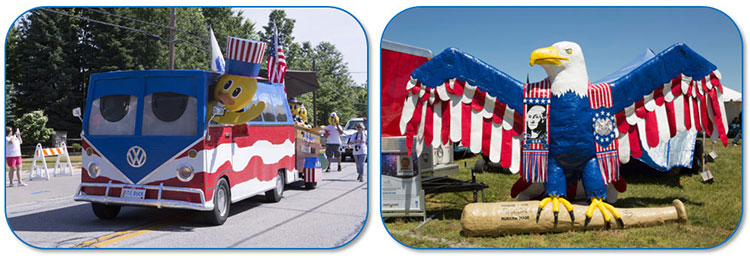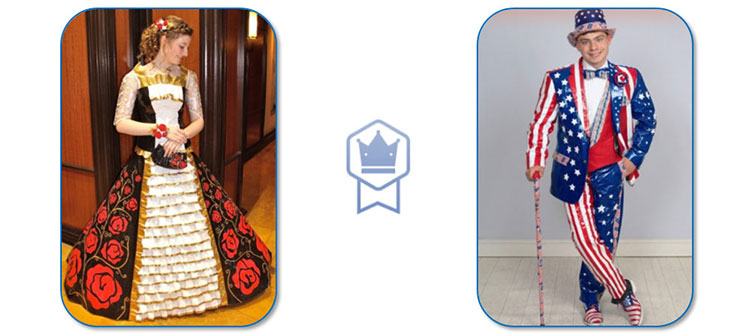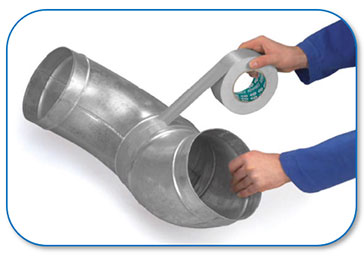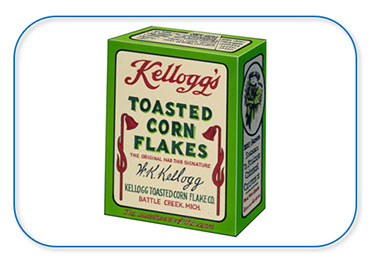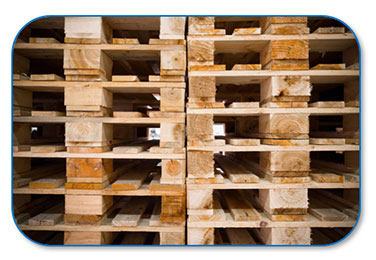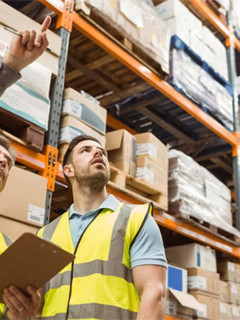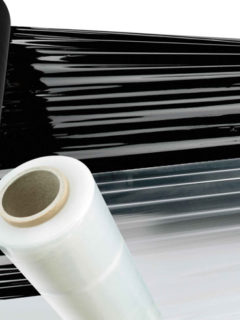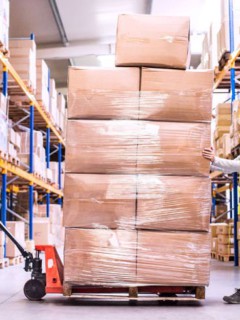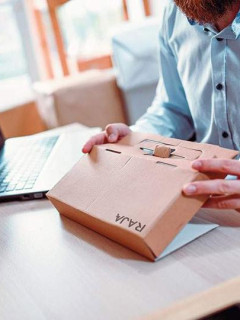A cardboard box, tape or bubble wrap may seem banal (and yes, even boring?). Yet they are a source of a range of surprising facts and curiosities! We collect the 15 most remarkable curiosities below.1 From the construction of a cardboard house and the origins of bubble wrap to the Tape Festival… what did you not know yet?
Fifteen facts and trivia about packaging materials
► 1. How can you tell the difference between PVC and PP tape?
]To tell them apart, you need to test elasticity: Namely, you can stretch PVC tape much further than PP tape (= polypropylene). A quick test: stretch a piece of tape and stretch it tight. Then try to poke through it with a pen. If you can poke a hole, it is PVC tape. If the tape snaps or tears, it is PP.2
► 2. In Ohio, they organise the annual Tape Festival
]The small town of Avon (Ohio) hosts a festival every year that focuses on tape in all its forms. You can see art, sculptures, clothing, etc. All made of tape. Avon is home to the Duck tape brand, making it the “Duck Tape Capital” of the world.3
► 3. Tape can get you a scholarship
“Stuck at Prom” is a competition run by an American tape manufacturer. The student who uses Duck tape to design and manufacture the most beautiful dress or elegant costume for their graduation ball will win a scholarship. A total of $20 000 in prizes will be awarded among the winners.3
► 4. Make frosted glass transparent again with tape
Frosted glass is not transparent. But you can change that with transparent tape. How can you do that? Frosted glass is basically glass with many small imperfections. If you stick tape over it, those imperfections are filled and the light shines through again completely. Watch the video here.4
► 5. In France, you can find a museum dedicated to cardboard
]Anyone wanting to visit a cardboard museum will have to head down to Valréas, the capital of cardboard in France. The Musée du Cartonnage et de l’Imprimerie there shows the history of cardboard and printing.
► 6. Reinforced tape was invented by the military
]Before the invention of reinforced tape, ammunition packs were waterproofed with wax and some kind of paper adhesive tape. These were often difficult to open, causing soldiers to lose precious minutes in the heat of battle. The idea for reinforced textile tape came from Vesta Stoudt, mother of two Marines from Illinois. She wrote a letter to President F. Roosevelt during WWII with the idea of reinforcing tape with textile. This would provide a much more efficient closure. Roosevelt delivered the idea to Johnson & Johnson and thus the reinforced tape as we know it today was born.
► 7. Tape saved the Apollo 13 mission
Tape has been present in the rescue kit of every NASA mission since the very beginning. And just as well, because an explosion during the Apollo 13 flight left the three crew members in serious trouble. The air filter system threatened to fail… With the help of tape (and some assistance from Houston, among others), they were able to repair the air filters and make it out alive.
► 8. Did you know that the cardboard box is already 200 years old?
- 1817: The first cardboard box came on the market in England.
- 1850: Kellogg’s is the first brand to use a cardboard box permanently as packaging.
- 1856: the first patent for corrugated cardboard is granted. The box as we know it today is born!
- 1883: the first corrugated board factory opens in London.
- 1914: wooden boxes are increasingly replaced by lighter cardboard boxes.
► 9. In Melbourne, you can find an entire house made of cardboard
That cardboard is indeed a sturdy material is proven by architect Peter Ryan. He designed a house entirely made of cardboard in 2004.
► 10. Paper and cardboard are the most recycled materials in Europe
Of all raw materials, paper and cardboard are recycled the most, followed by glass and metal, among others. Paper can be recycled up to seven times. A cardboard box up to 10 times.
► 11. Bubble wrap lowers your stress levels
Research has shown that one minute of bubble plopping is as relaxing as a 30-minute massage. One theory behind this is that it has to do with our ancestral habit of squashing ticks or other insects that plagued us, with that typical plopping sound. It could also be related to the fact that people are soothed by touch. Rubbing the bubbles and snapping them simulates touch sensations.
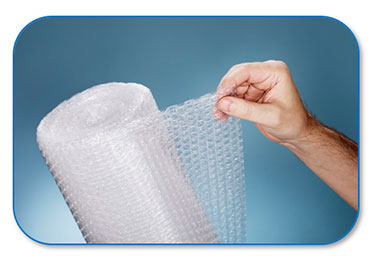
► 12. Bubble wrap was originally a type of wallpaper
]In 1957, engineer Al Fielding and Swiss inventor Marc Chavannes wanted to market a wallpaper with a raised texture. As an experiment, they glued two shower curtains together. After the edges were sealed, air bubbles remained in the middle. As wallpaper, this idea never achieved much success but the packaging industry quickly knew how to use it.
► 13. In January, you can celebrate Bubble Wrap Appreciation Day
The last Monday of January is the day when we put bubble wrap or bubble wrap in the limelight. Thanks to this versatile protective material, a mass of products reach their destination safely every day, without breaking or cracking.
► 14. No extra trees will be cut down for pallets
The wood from wooden pallets is a by-product of making furniture or construction material for housing. So extra trees fortunately did not have to be cut down. At the end of their life cycle, most wooden pallets are recycled into fuel, wood fibre pallets or litter for the garden or for in animal sheds. In 2015, there were three billion pallets in circulation in the EU. That is four times the number of inhabitants.
► 15. The best protection against shocks is… air!
No paper cushions, no air cushions and no foam cushions either… No! The protection is not in these materials but in the air around and inside them. It is through pure air that shocks are best absorbed.
]Sources:
1 www.rajapack.es/blog-es/curiosidades/sabias-que-trucos-curiosidades-sobre-embalaje/
2 mentalfloss.com/article/74550/10-durable-facts-about-duct-tape/
3 www.duckbrand.com/festival/2019-avon-heritage-duck-tape-festival/
4 lifehacker.com/see-through-frosted-glass-with-a-piece-of-clear-tape-5800404/











